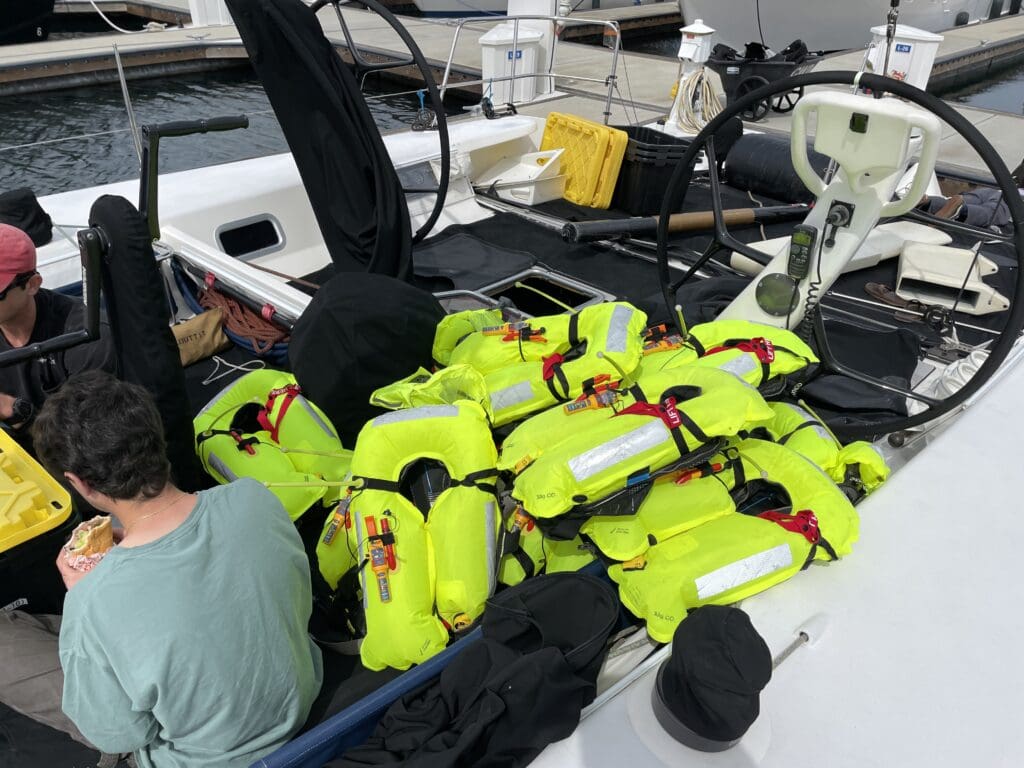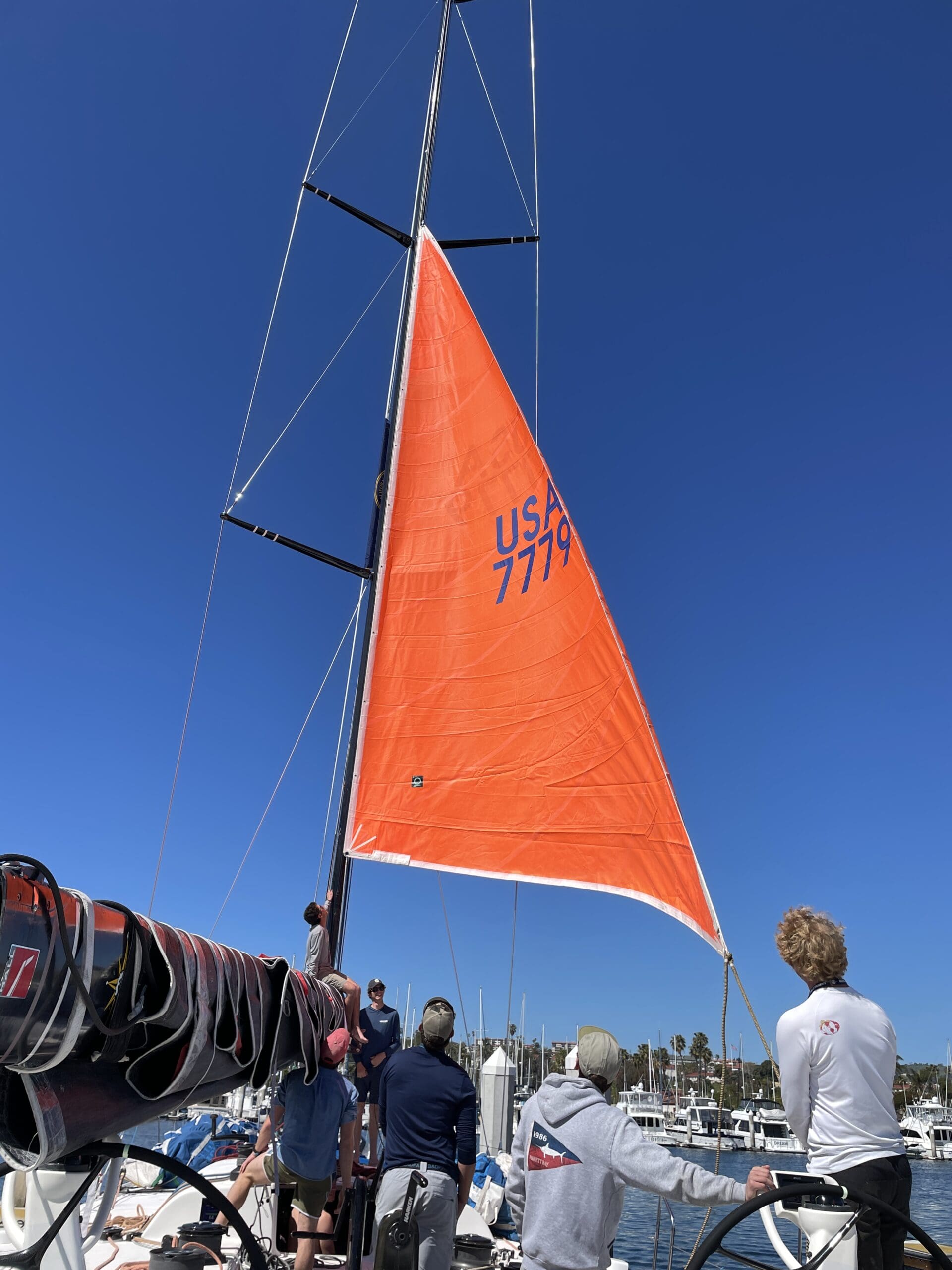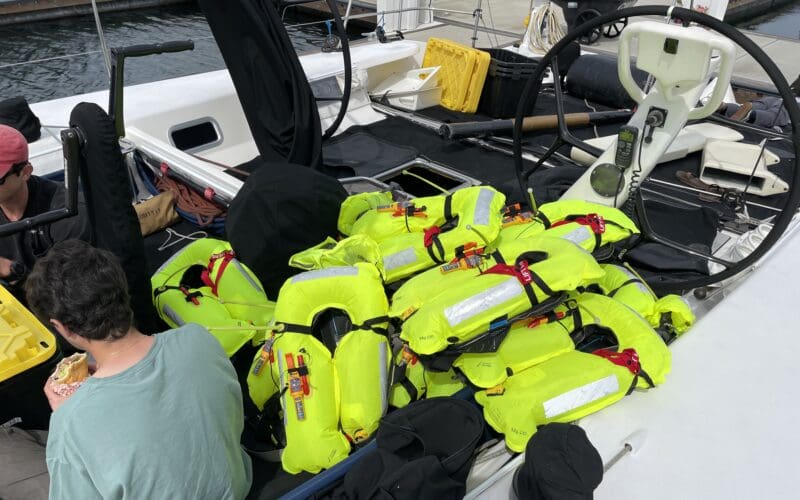
For any offshore voyage, making sure you have a seaworthy vessel and a safe crew before departure is paramount. The Transpac Race to Hawaii, a 2,225-mile ocean passage, is no different. The Transpac race committee takes this need for seaworthiness and safety seriously with a rigorous protocol to ensure boats and crews are ready. The race has a full complement of 21 inspectors on the west coast, from San Diego in the south to Seattle in the north, that conduct inspections to ensure that competing boats are in compliance with US Sailing’s Safety Equipment Requirements (SER) for ocean races.
Though the Transpac race organization emphasizes the need for inspections and compliance with the SER rules, the race does so as a courtesy and stresses that as per USSER 1.2: “The safety of a boat and her crew is the sole and inescapable responsibility of the ‘person in charge.’”
Ultimately, the process is a learning experience for everyone. According to Kerry Deaver, chief inspector for the race, it’s also a process of give and take. “I enjoy doing them,” Deaver said. “There’s something to be learned and to shared with every inspection. It’s an exchange of ideas and best practices and every inspector when they come away from an inspection has learned something as has the crew.”
A look at the SER documents on the US Sailing website for monohulls offshore (www.ussailing.org/competition/offshore/safety-information/ser-world-sailing-special-regulations/) reveals an extensive list of items requiring scrutiny (US Sailing also has SER docs for monohull nearshore and coastal and for multihull nearshore, coastal and offshore). In the monohull offshore document there are extensive sections for hull and structure (30 requirements — including cockpit drains, through hulls, stability, lifelines, bilge pumps and more), safety equipment (51 requirements — such items as life jackets, harnesses, jacklines, etc.) and skills (five requirements — man overboard, emergency steering and safety at sea training).

In addition to the SER list from US Sailing, participants in the Transpac also have to prove that that 30 percent of the crew sailing in the race have participated in a one-day offshore safety- at-sea seminar, and 30 percent have done the two-day international offshore with hands-on training in a safety-at-sea seminar (including the vessel captain and watch captains). They must also produce documentation that at least two crew have taken a First Aid/CPR course.
Two other areas in which the crew must show competence are in having several methods of emergency steering and a system for man overboard recovery. There are a number of ways to accomplish these tasks and the race doesn’t have set rules on how these tasks must be done. “We try hard not to dictate on the hows of anything,” Deaver said. To pass inspection, however, captain and crew must have chosen a method and they must have practiced that method prior to the boat’s inspection. “You have to practice one method and to see that it works,” Deaver said. “An inspector doesn’t need to be aboard for this practice. We take their word that they have practiced it.”

While the inspector is not aboard for the practice session, during the actual inspection crews do need to demonstrate what they’ve learned. “They need to know multiple ways of doing the task,” Deaver said. “And they need to show us the setup of one method.” The crew has to lay out and demonstrate the elements of their boat’s emergency steering method and their man overboard recovery system to prove they know how to use it should they need to do so at sea. The inspection process isn’t merely a cataloging of gear. “It’s more than just equipment, you also need to show you know what you’re doing.”
Often there is a significant sharing between the inspector and the crew. “There is interaction between the inspectors and boat crews,” Deaver said. An inspector may pass on a method he or she saw on another boat or may learn a new method to pass on to others.
In addition to demonstrating competence in emergency steering and man overboard recovery there is also a list of required gear that must be checked by the inspector. As the Transpac information sheet on inspections states: “Present your boat to the inspector on inspection day in fully compliant condition. Lay all safety equipment out on deck, in order of the SERs and NOR [Notice of Race], for an efficient inspection.”
According to Deaver the average inspection lasts between 90 minutes and two hours, provided the required gear is aboard and the crew demonstrates its proficiency. What if the boat has issues and doesn’t pass inspection? In that case the captain usually must arrange for a second inspection. As Deaver put it, “When you’re ready call me back.” If the issue was, for example, a missing set of flares, then the captain can get the flares and take a picture of them aboard the boat and that is considered acceptable for completing an inspection. Other noncompliant issues may require another visit by the inspector, however.
As of this writing in May eight boats have done their initial inspections and two have been signed off as completed. Transpac boats have only two weeks to get their inspections done, with the deadline being May 31. As Deaver wrote in an email on May 12: “It’s going to be a very busy two weeks!”
Deaver pointed out that inspectors not only have the racers’ best interests at heart, but also that most of them have sailed in recent runnings of the race and many, like Deaver, are racing in this edition as well. “We’re all in this together,” Deaver said.

